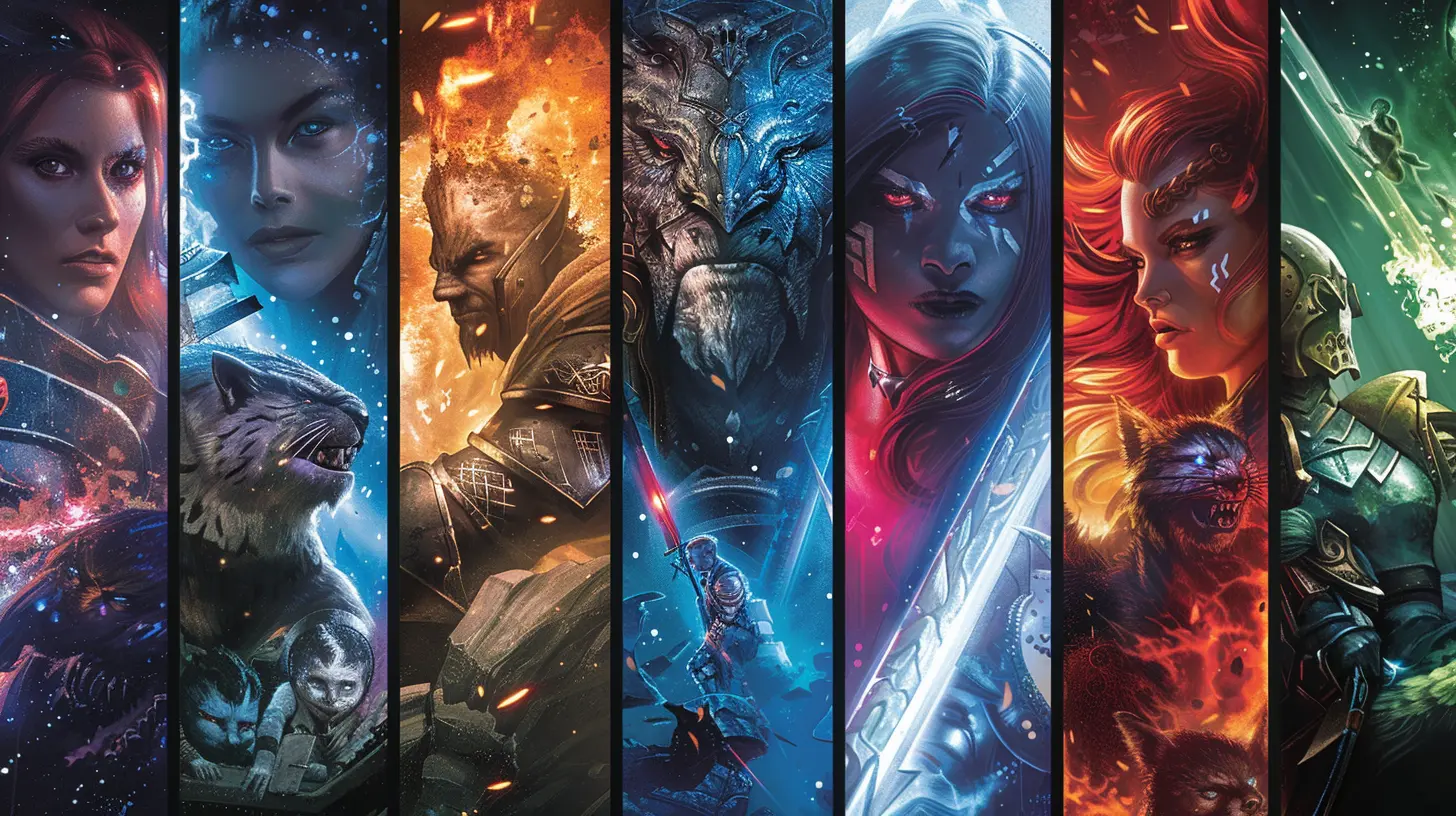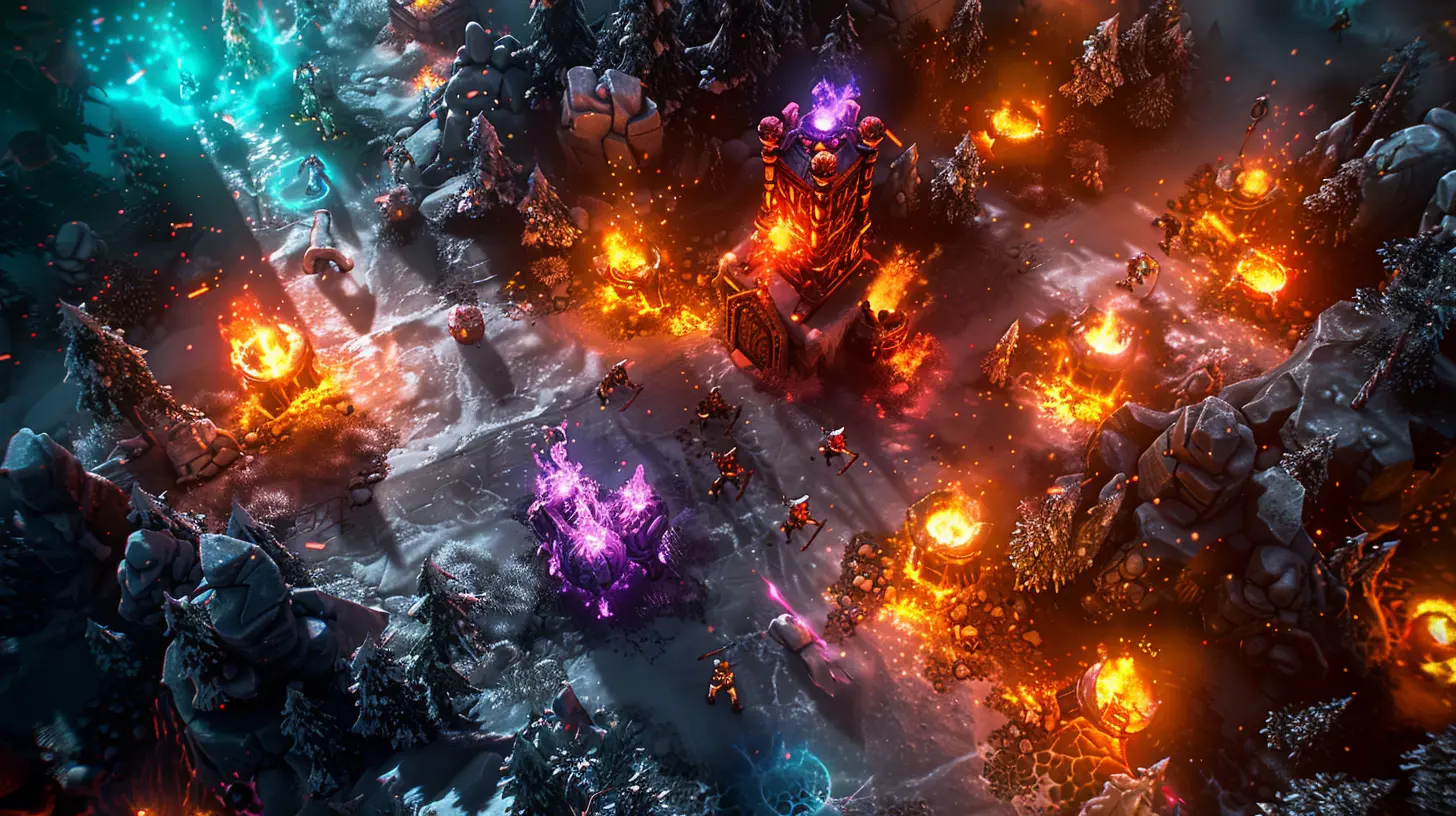Why Some Games Thrive as Tournament Staples While Others Fade
5 September 2025
Ah, competitive gaming — the dazzling world of flashy gameplay, screaming fans, and prize pools so large they make your bank account feel like it's made of pocket lint. Some games seem to sit comfortably on the throne of eSports, basking in the glory of their fame for years, while others burst onto the scene only to disappear faster than you can say "patch notes".
But why is that? Why do some games thrive and stick around as tournament staples, while others fade away like your New Year's resolutions come February? Grab a bag of chips and settle in because we're about to unpack this puzzle like an overfilled loot crate.
The Secret Sauce: What Makes a Game Tournament-Worthy?
Let’s get one thing straight: not every game can be eSports material. As much as we love the idea of turning Goat Simulator into a competitive phenomenon, it’s probably not happening. Games that thrive in tournaments have a set of magical ingredients that make them appealing to players, fans, and organizers alike.1. A High Skill Ceiling (AKA, “Git Gud” Potential)
Ever played a game where you just mashed buttons and somehow won? Yeah, those games are fun for a weekend party, but they're not making it to the big leagues. Games that succeed as tournament staples—think League of Legends, CS:GO, or Street Fighter—have depth. Like, "Grand Canyon level" depth.These games reward skillful play, strategic thinking, and hundreds of hours of practice. If a game allows for casual players and pro players to coexist yet still showcases a massive skill gap, it’s an eSports goldmine. It's like chess but with more explosions.
2. Spectator Appeal: Not Just Fun to Play, But Fun to Watch
Imagine trying to watch a tournament for a game that’s so visually chaotic even players can’t tell what’s happening. No thanks, hard pass. Games that thrive as tournament staples are not only engaging for players but also enjoyable to watch as a fan.Games like Rocket League are easy to understand — soccer with jet-powered cars, what’s not to love? Meanwhile, StarCraft II offers a ballet of strategy and timing that's mesmerizing once you know what to look for. They’re the kinds of games where even your grandma might nod approvingly and say, “Oh, look at that strategy!” before asking for snacks. 
The Community Factor: People Make or Break it
Now, let’s talk about the unsung heroes of competitive gaming — the communities. A game’s success as a tournament staple depends on the people who play it, watch it, and obsessively post memes about it on Reddit.3. Devs Who Actually Care
You know what kills a competitive scene faster than rage-quitting after getting obliterated by a 12-year-old? Developers who don’t care about their game’s eSports potential. Consistent updates, good balancing, and communication with the community are non-negotiable.Take Fortnite, for example. Love it or hate it, Epic Games made sure to keep things spicy with constant updates and massive events. Some would say they went a little overboard (cough mechs cough), but hey, nobody can accuse them of being lazy.
On the flip side, Artifact (remember that game? No? Exactly) flopped because Valve seemed to forget players exist. A stagnant game gets abandoned faster than a toxic teammate in ranked matches.
4. Cult Following: The Die-Hard Fans
Ever seen a Smash Bros. tournament crowd? Those people would storm a castle to keep their game relevant. Successful tournament staples thrive on their fanbases. These are the players who set up grassroots tournaments, organize online leagues, and keep the game alive even if the developers lose interest (cough Melee cough).If your game has a loyal, borderline-obsessed community, you can bet it’ll stick around longer than a power-up in Mario Kart. 
Why Some Games Fade into Obscurity
Alright, now for the spicy part: why do some games crash and burn in the competitive scene? Sometimes it’s the game’s fault, sometimes it’s bad timing, and occasionally it’s just… well, nobody really knows.5. Lack of Balance: The Game Is Basically a Dumpster Fire
Imagine a competitive game where one weapon, character, or strategy is so overpowered it renders everything else irrelevant. Boring, right? A lack of balance can absolutely tank a game’s viability in tournaments.Nobody wants to watch a match where every player picks the same character (looking at you, Overwatch during the GOATS meta). Variety is the spice of life, and games need it to keep things interesting.
6. Too Many Barriers to Entry
Here’s the thing: if your game is harder to understand than quantum mechanics, you’re going to have a bad time. Games that thrive as tournament staples are usually easy to pick up but hard to master. Fans should be able to grasp the basics without needing a PhD in the game’s mechanics.For example, Dota 2 works as a competitive game because, while the strategies and mechanics are deep, at its core, it’s still: “Break the enemy’s tower thingy.” On the flip side, games that overwhelm new players with tutorials longer than The Lord of the Rings director’s cut might as well wave the white flag.
7. Lack of Longevity (AKA The "Flavor of the Month Syndrome")
Some games are hype for about five minutes and then vanish into the void like a smashed controller. Remember when Fall Guys was the hottest thing on Twitch? Yeah, it’s still fun, but the hype fizzled.Longevity requires consistent updates, a strong community, and gameplay that doesn’t get stale. Without these, a game can’t sustain itself as a tournament staple. It’s like trying to make a campfire with soggy matches — not gonna happen. 
So, What’s the Takeaway?
The world of competitive gaming is equal parts thrilling and unpredictable. Some games rise to the top, becoming legendary tournament staples that dominate the eSports world for years. Others? Well, they’re like that one friend who says they’re coming to the party and then ghosts you.The secret formula for success seems to be a mix of highly skilled gameplay, an enthusiastic community, caring developers, and just the right amount of luck. It’s not rocket science… actually, scratch that, it kind of is.
But hey, at the end of the day, whether a game thrives or fades, what really matters is that we, the players, get to have fun, occasionally scream at our screens, and enjoy this wonderfully chaotic thing we call gaming.
all images in this post were generated using AI tools
Category:
TournamentsAuthor:

Tayla Warner
Discussion
rate this article
1 comments
Winter Barron
Some games have the charm; others just have the bugs. Guess which wins!
September 5, 2025 at 5:10 AM

Tayla Warner
Indeed, charm often keeps players engaged, while persistent bugs can drive them away. Quality matters!


